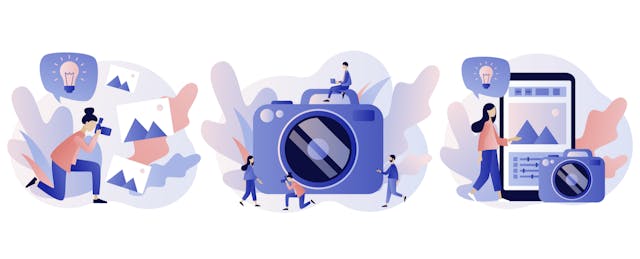As educators sift through numerous edtech tools in search of meaningful ways to connect, engage and share with their students, the following questions are helpful to consider:
- Can educators remotely share knowledge, create new lessons and deliver assignments to their students consistently, quickly and easily using this tool?
- Will this tool enable educators to assess their students’ understanding and growth over time?
- Does this tool increase student engagement, motivation and ownership at home and within the classroom?
Digital portfolios address all of the above concerns and more. They should be foundational to every school’s technical ecosystem—for both remote and in-class learning—and here’s why.
1. They give students voice and choice
Students are more likely to stay motivated and engaged when they have a say in how the work will be completed. Digital portfolios give students the freedom to creatively respond to assignments while demonstrating authentic learning—creating and curating multimedia to show their understanding and exhibit competencies.
This approach supports the whole student. In a personal way, students are able to connect with their educators. Using audio, video and text, students explain who they are, how they prefer to learn and what means the most to them. Progress is captured over time, giving educators and students a clear understanding of abilities, talents and potential.
“It’s not just a single sheet of, ‘Here’s what I’ve done in the past few years.’ It’s more like, ‘Look at what I’ve done in great detail, and get to know who I am too.’” - Noah Wong, 10th Grade Student, Cast Tech High School, San Antonio, TX
2. They bring learning together in one place
The ability to quickly gather 30 different articles on a single topic, or to learn a new skill in a five-minute YouTube video has given students limitless opportunities to expand their knowledge and experience the world around them. This abundance of information has created the need for a tool to help students sort through, synthesize and make sense of the content they are consuming. Digital portfolios facilitate this process, helping students develop organizational skills, and providing them with a space to bring their learning together in one place.
"If you are interested in giving your students the opportunity to have the most authentic learning experience possible, it all starts with creating a digital hub for their learning experiences to happen." - Jeffrey Bradbury, Educator, Speaker, Broadcaster, Teacher Cast Educational Network
3. They support project-based learning
With project-based learning (PBL) and work-based learning (WBL), an educator outlines clear expectations via a rubric, provides opportunities for checking in and sharing feedback, and encourages students to connect and collaborate to complete the assignment. Digital portfolios are an invaluable tool to support these student-centered pedagogies.
PBL and WBL rely heavily on a student growth mindset, which challenges learners to demonstrate their understanding in ways other than test scores or grades. In this type of setting, students use digital portfolios to show their process, track progress and develop a final product. Work is then easily shared with educators and peers, encouraging reflection and interaction with new ideas.
The process of creating and curating projects within a digital portfolio develops essential soft skills for the digital age. Students learn to identify problems, find solutions through trial and error, and embrace a growth mindset. Their portfolio then serves as a powerful tool, showcasing how they have cultivated and nurtured these skills.
“Problem-solving, team working and communication are the skills that are currently most in-demand in the workplace.” - The Economist Intelligence Unit: Skills of the Future.
4. They promote individual check-ins
Video instruction is a powerful tool, but it is only one way to stay connected with students, and often leads to a one-to-many dialogue. Digital portfolios allow for daily, individualized, back-and-forth conversation and collaboration. Even in a remote environment, students and educators can easily see each other’s projects, share day-to-day experiences and exchange ideas.
With their own portfolios, educators can create meaningful learning spaces, allowing students convenient access to assignments and templates, as well as a personal connection with their educator. Students may capture their learning without the constraints of a specific class time. Educators can provide in-line commenting, offering immediate, valuable feedback to students.

“I don’t want my students to be restricted to the four walls of the classroom. Digital portfolios give them the creative outlet to showcase their work. It’s also a great way to let students see my work...they see a little bit about me.” - Tara Bordeaux, Educator, Lanier Early College High School, TX
5. They provide an alternative form of assessment
Digital portfolios showcase academic proficiencies beyond test scores. Year over year, students naturally build a collection of their best work—comprising soft skills, talents, passions, reflections and processes. Students are not confined to traditional curriculum and subject matter but instead use portfolios to broadcast their passions and interests or offer context for extracurricular activities. These details provide educators and admission boards a comprehensive view of the whole student.
“Schools who faithfully implement a digital portfolio program see a 33% increase in student completion rates and a 10% increase in GPA.” - International Journal of ePortfolio
A digital portfolio encourages a lifetime of learning. Serving as a record of milestones and capstones across grade levels—a clear summary of personal accomplishments and academic achievements—it is an exhibition of one’s best self, to be shared with anyone of their choosing.



